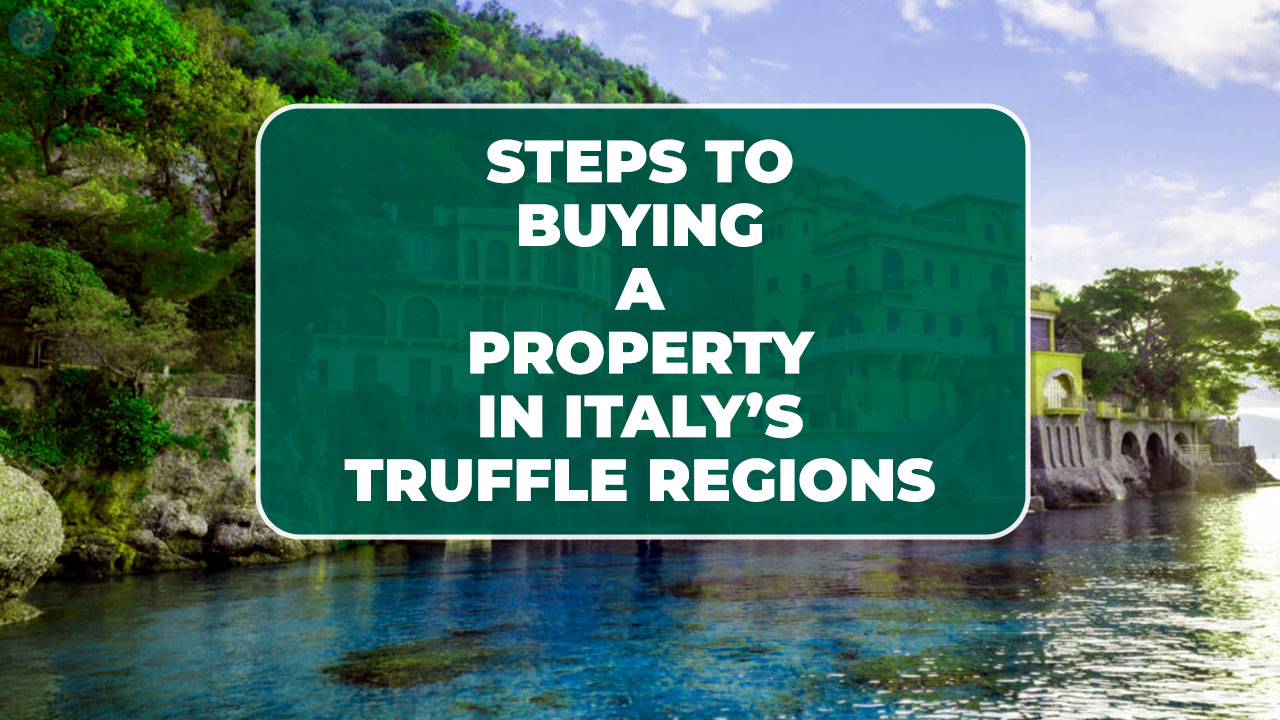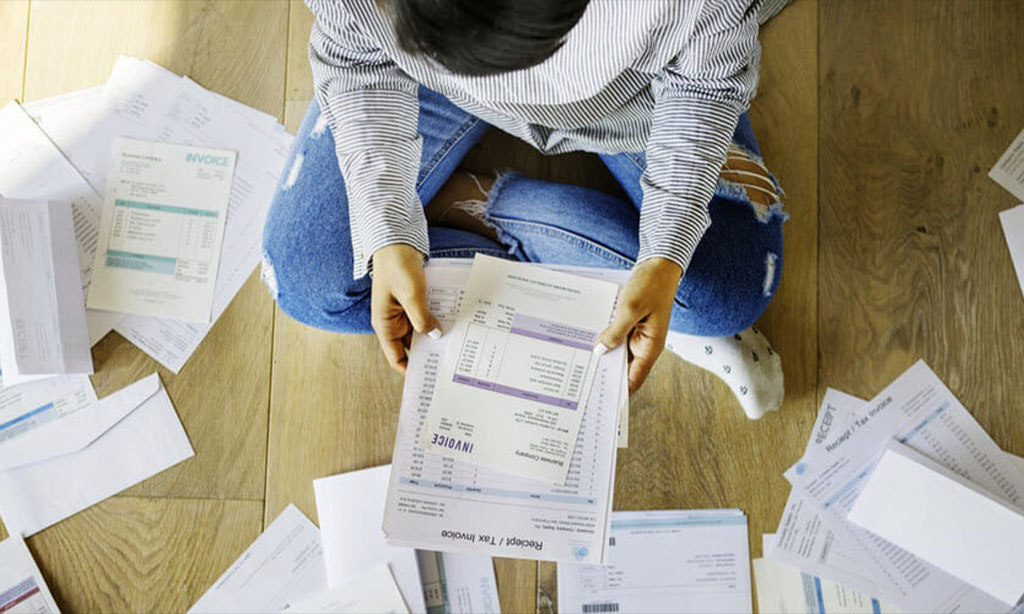Dreaming of owning a property in Italy’s truffle regions? You’re not alone. Many people find the idea exciting but feel lost about where to start. The process can seem confusing, especially if you’re new to buying homes abroad.
Italy is known for its stunning landscapes and world-famous truffles. Regions like Tuscany, Piedmont, and Emilia-Romagna offer unique opportunities for buyers. Buying a property in Italy’s truffle regions means investing in more than just a house—it’s about becoming part of a rich tradition.
This guide will break down the steps clearly, from research to signing contracts. You’ll learn how to budget, understand local laws, and find the perfect property with olive groves or truffle grounds.
Ready to make your dream come true? Let’s get started.
Research the Truffle Regions of Italy
Italy’s truffle regions, like Tuscany and Piedmont, offer unique charm and fertile land. Explore these areas to find properties near oak groves or along the River Po for truffle-friendly soil.
Popular regions: Tuscany, Umbria, Piedmont, Emilia-Romagna
Tuscany stands out among famous Italian locations like Piedmont, Umbria, and Emilia Romagna, attracting foreign investors worldwide—especially its iconic areas like Val d’Orcia & Crete Senesi…
Home to white-truffle-esque treasures alongside beautiful landscapes filled with olive groves plus vineyards producing Brunello wine varieties makes Tuscan Hills the perfect choice!
In northern parts lies the scenic Apennine range, including spots around the Po River, which boast fertile lands ideal for growing the Tuber Magnatum Pico fungus species, known globally courtesy of its unique aroma, making rural properties here highly sought after nowadays thanks to sustainable farming practices being embraced widely across these provinces too…
“The scent alone will transport you straight back centuries ago.”
Understand the Buying Process in Italy
Learn the legal steps, work with a notary, and ensure all documents are in order—read on to simplify your property purchase.
Legal requirements
Buying property in Italy’s truffle regions involves specific legal steps. The seller must provide ownership title, floor plans, cadastral documentation, and an energy certificate.
Building permits and proof of identity are also required for the transaction.
A notary plays a key role in verifying documents and ensuring the sale follows Italian law. Foreign buyers should be aware of local regulations—like truffle harvesting laws—and plan for taxes such as capital gains tax.
Working with estate agencies can help navigate these requirements smoothly.
Role of a notary
A notary plays a key role in buying property in Italy. They ensure the legal process is correct and binding. The notary checks ownership titles, cadastral documents, and building permits.
They also handle the final contract signing.
The seller must provide an energy certificate and floor plan. The notary verifies these details for accuracy. Their work protects both buyer and seller during the transaction. This step is required by Italian law for all property purchases.
Budgeting for Your Purchase
Plan your finances carefully—factor in property costs, taxes, and fees to avoid surprises later; read more to get the full picture.
Property costs
Buying property in Italy’s truffle regions involves various expenses. The price depends on location, size, and condition. Rural properties with arable land or truffle groves often cost more.
Renovation opportunities can lower initial costs but require extra planning and permits. Taxes and fees add to the total budget, including property taxes and notary fees. Homes near popular areas like Emilia Romagna or Tuscany may have higher prices due to demand.
Financing options include outright purchases or mortgages for foreign buyers. Some properties come with olive groves or access to gravel roads, adding unique value. Properties linked to truffle reserves or sustainable farming practices are attractive investments.
Always inspect the land registry for ownership details before buying. Working with an estate agent ensures clear costs and avoids unexpected liabilities during the process.
Taxes and fees
Property costs in Italy’s truffle regions include taxes and fees. Buyers pay a registration tax, which varies based on property type. Rural properties like truffle groves or farmland often have lower rates.
A notary fee is required for legal documentation—usually 1-2% of the purchase price. Local municipalities may levy additional charges for services like cadastral updates. Energy certificates and building permits add to expenses too.
Plan for these upfront to avoid surprises during the buying process.
Identifying the Right Property
Look for truffle groves, farmland, or rural homes with renovation potential—perfect for sustainable farming or a truffle reserve. Keep reading to find your ideal spot!
Truffle groves and farmland
Truffle groves in Italy’s truffle regions offer unique opportunities for buyers. Properties often include oak barrels and hornbeams, which are essential for truffle growth. Farmland with arable land or soil suited for Tuber magnatum Pico [white truffles] is highly sought after.
Renovation projects on rural property can turn old farmland into thriving truffle reserves. Sustainable farming practices help maintain the aromatic quality of the soil. Buyers should inspect gravel roads, storage rooms, and other features that support truffle harvesting activities in areas like Piedmont or Tuscany.
Renovation opportunities
Renovating a property in Italy’s truffle regions offers unique potential. Many rural properties, like old farmhouses or abandoned olive groves, need updates but come with charm and character.
Planning permission is required for renovations—Italy has strict building regulations. Properties often include arable land or truffle grounds, perfect for sustainable farming or creating a truffle reserve.
Renovations can turn these spaces into functional homes while preserving their rustic appeal. Some buyers focus on restoring historic features, like stone walls or wooden beams, to maintain authenticity.
Others modernize interiors for comfort without losing the traditional feel. The process takes time but adds value to your real estate investment in areas like Tuscany or Piedmont.
Conducting a Property Inspection
Inspecting a property in Italy’s truffle regions is essential. Check for structural issues, especially in older rural properties or those near gravel roads. Verify the seller provides ownership title, floor plans, and building permits.
Look at the land quality—arable land or truffle grounds can add value. Ensure the energy certificate meets local standards. Inspect any olive groves or storage rooms for potential use.
Pay attention to renovation needs—Italy’s strict planning laws mean changes take time. A thorough inspection helps avoid surprises later in the buying process.
Securing Financing Options
Financing your rural property purchase can be simplified if you understand local options—outright purchase or installment plans exist without loans. Italian banks often offer mortgages customized for flexibility based on proof of income.
Auctions can also present affordable deals requiring down payments upfront. Work directly with trusted estate agencies familiar with regional markets like the Emilia Romagna Apennines hills, areas filled with fertile tuber melanosporum grounds ideal for sustainable farming investments.
Ensure binding agreements clearly outline liabilities before signing contracts under power of attorney arrangements, ensuring smooth transitions of ownership rights with secured paperwork needed to move forward quickly and safely during negotiation periods.
These processes are handled efficiently, saving time and money throughout the entire transaction phases, resulting in less stress and a successful conclusion. The end result is a satisfying experience awaiting future owners eager to explore opportunities available now, creating lifelong memories and enriching lives significantly while building brighter futures.
The possibilities offered by nearby locations make these destinations prime spots for real estate investments, with hidden gems worth considering closely and decisions made wisely leading to rewards that are both fulfilling and abundant.
Understanding Local Regulations
Truffle harvesting requires special permits—learn local laws before you start digging. Nearby properties can have their own restrictions based on zoning rules. Check carefully if you plan any changes, especially near protected areas like oak woodlands, which are often rich sources of these fungi too!
Truffle harvesting laws
Truffles grow naturally across parts like Piedmont—a top spot for trufficulture fans—but picking them isn’t free-for-all fun! Harvest rules exist everywhere these fungal gems thrive; breaking these can lead you straight into legality troubles plus hefty fines each wrong move made against regional environmental standards set forth during harvest seasons specifically defined per area under Tuber magnatum Pico management plans implemented closely monitored governmental oversight bodies charged protecting delicate ecosystems found within rural properties featuring prime tuber ground conditions ideal cultivating prized culinary treasures safely sustainably done right way every step journey involved here too
Working with Local Real Estate Agents
Working closely with local real estate agents makes buying property easier—especially near Piedmont or Emilia Romagna. These experts know regional markets well—from arable land around Crete Senesi hidden along gravel roads down past olive groves tucked away leading out to Liguria beyond Sestri Levante heading back up close to San Remo nestled under Apennine Hills skirting past Brunello vineyards ending somewhere near Abbey Monte Oliveto Maggiore nearby Provence de Terni itself…
Agents assist with legal steps like securing proper documents, including ownership titles linked through cadastral records showing energy certifications alongside construction permits as well.
Brokers licensed per stringent national regulations ensure smoother experiences throughout the entire process—highlighting potential issues early and providing clearer paths forward, saving future headaches.
They support foreign investors unfamiliar with the area, enabling better decisions and leveraging local knowledge effectively to ensure smarter investments across the board.
Finalizing the Purchase
Gather all required documents, including proof of identity and financial records. Sign the contract in front of a notary to complete the transaction legally.
Documentation
Finalizing your property purchase requires gathering essential documents mandated by Italian law—ownership title confirms legal rights; floor plans provide clear layouts for inspections; cadastral documents list official records such as acreage boundaries before finalizing agreements that may involve a power of attorney if necessary.
Energy certificates showcase the eco-efficiency ratings of living spaces sustainably built in rural settings near white truffle reserves around Emilia Romagna, a region with a rich culinary history that dates back to medieval times.
These reserves thrive today despite regulations governing harvest periods and designated zones aimed at preserving biodiversity and protecting the region’s underground treasures, highly valued in the culinary world.
Food lovers everywhere continue to relish fresh pasta dishes paired beautifully with fine Brunello wines produced in nearby vineyards flourishing in nutrient-rich soils that sustain life year-round.
Generations have cherished these timeless traditions, celebrating family gatherings and special occasions with joy and memorable moments that are deeply rooted in cultural heritage.
This cherished tradition creates a sense of belonging, where happiness is abundant, peace reigns, and contentment fills the air as individuals embrace the beauty of their surroundings.
The rhythms of nature guide paths forward with confidence and security, knowing that what is yours is safeguarded and fiercely protected against all odds. Resilience and determination have prevailed over challenges, demonstrating an indomitable spirit and courage that shines through even in difficult times.
At the close of the day, a well-earned rest reflects hard-fought victories as the final chapter is written—a chapter that will inspire future generations through its stories passed down in love and unity.
The enduring legacy shaped by this shared vision holds a profound impact, transforming lives in ways once thought unimaginable. Dreams take tangible form, becoming reality—experienced firsthand with hearts aligned in purpose.
Progress moves forward boldly, fueled by conviction and a commitment to noble ideals. Generosity and gratitude enrich the journey, acknowledging the blessings received while showing deep appreciation for life’s intricate designs.
The tapestry of experiences, woven with vibrant colors and vivid patterns, tells a story of awe-inspiring beauty—captivating all who encounter it and drawing souls closer together.
Through adversity and triumph, bonds are strengthened, opportunities seized, and potential unlocked as paths forward emerge with limitless possibilities.
Signing the contract
Signing the contract is a key step in buying property in Italy’s truffle regions. The seller must provide ownership title, floor plan, cadastral documentation, and an energy certificate.
A notary oversees the process to ensure legality and transparency. Both parties sign the deed of sale at the notary’s office. Taxes and fees are levied during this stage—prepare for these costs upfront.
Power of attorney can be used if you cannot attend in person. The contract becomes binding once signed, so review all details carefully before finalizing. This step secures your investment in rural property or truffle ground areas like Piedmont or Emilia Romagna.
Benefits of Owning Property in Truffle Regions
Owning property in Italy’s truffle regions offers unique advantages. You gain access to arable land perfect for sustainable farming or cultivating truffle grounds. The Italian Riviera and Central Italy, like Tuscany and Piedmont, are prime spots for white truffles [Tuber magn pico].
These areas attract tourists and investors alike, making real estate investment profitable. Properties often include olive groves or vineyards, adding value.
Living here lets you enjoy the local culture and cuisine—think fonduta with fresh truffles or regional white wines. Truffle hunting is a popular activity in Piedmont, offering both fun and income potential.
Rural properties often come with scenic views of Crete Senesi or the Abbey of Monte Oliveto Maggiore. With strict harvesting laws ensuring quality, owning land here supports eco-friendly practices while boosting your lifestyle and finances.
Takeaways
Buying property near white truffle zones brings endless joy—and challenges as well! Meet **Giovanni Moretti**, a real estate veteran and certified broker since ’98, who has helped hundreds find their dream homes in the area while gaining unparalleled insights throughout his career via various transactions, including successful sales across diverse markets in these regions.
He has also served clients from international locations, primarily Europe, North America, and Asia Pacific, efficiently managing complex legalities while prioritizing client satisfaction, earning numerous accolades, and recognition locally and globally year after year.
According to Giovanni Moretti, “Understanding local needs coupled with a strong knowledge base matters most, especially concerning specifics like taxation systems and registration procedures, which ensures a smooth purchasing process, guaranteeing desired outcomes without unnecessary difficulties.”
He adds, “Transparency and honesty are of paramount importance at every step because they build mutual respect, foster long-term relationships, and significantly reduce potential conflicts or disputes later, thereby safeguarding all parties’ interests for the benefit of everyone involved.”
He also suggests approaching tasks in a systematic and logical order to avoid pitfalls. He recommends starting with thorough research on locations and proceeding step by step to minimize risks and errors, effectively saving valuable resources like money and effort while maximizing returns to the fullest potential.
More importantly, he states that the advantages significantly outweigh the challenges initially faced. Therefore, making informed decisions pays off generously in the long run and ensures success more quickly than delaying or hesitating.
FAQs on Steps To Buying A Property In Italy
1. What makes Italy’s truffle regions a good real estate investment?
Italy’s truffle regions, like Emilia Romagna and the Crete Senesi, offer rural property with truffle grounds and olive groves. These areas are perfect for sustainable farming and arable land, making them a smart choice for buyers.
2. How do I find a property in Italy’s truffle regions?
Start by contacting a local estate agency. They can help you explore rural properties, from Ligurian hills to the Romagna Riviera, ensuring you find the right truffle reserve or olive grove.
3. What should I look for in a truffle property?
Look for features like a gravel road, storage rooms, and arable land. Check if the property has truffle grounds for Tuber Magnatum Pico or Tuber Aestivum, which are valuable for truffle farming.
4. Are there legal steps to buying property in Italy’s truffle regions?
Yes, you’ll need to secure visas, pay a down payment, and ensure the property is free from liability. Working with a trusted estate agency can help you navigate these steps smoothly.
5. Can I use the property for more than truffle farming?
Absolutely. Many properties in areas like the Province of Terni or the Heel of Italy also have olive groves or arable land. You can diversify into sustainable farming or even create a vacation spot near the coastline.







































